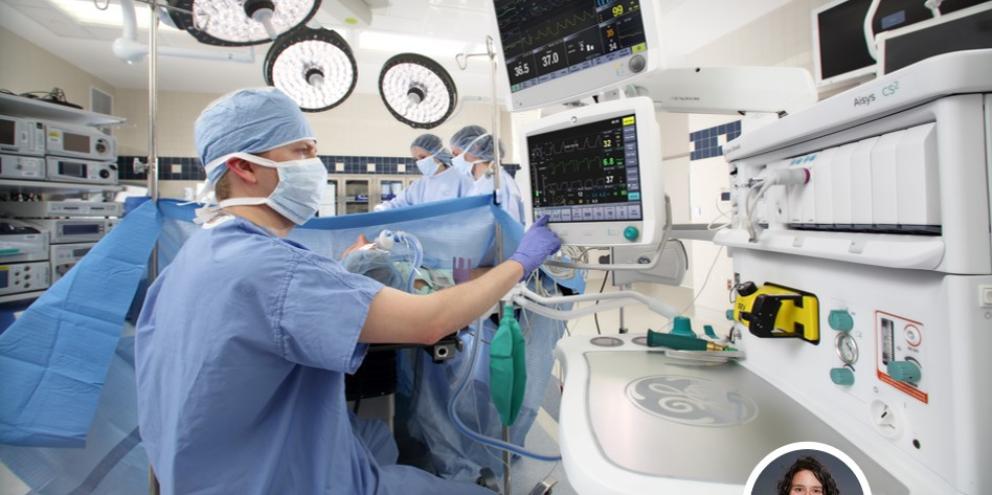That’s translating to a renewed effort among hospital and health system leaders to encourage broader adoption of low flow anesthesia.
A recent survey of 100 hospital leaders, in fact, found that 74% believe widespread adoption of low flow anesthesia would positively impact patient care, and 68% say it would reduce costs[3].
The C-suite survey also shows that 21% of participating organizations use low flow anesthesia in more than 50% of cases. Another 18% say their organization is exploring low flow anesthesia to reach sustainability goals—and nearly half say low flow may be an initiative their organization will explore in the next 1-2 years[4].
With momentum increasing for low flow anesthesia, now is the time for C-suite and other executives to develop change management strategies that empower clinicians and anesthesia providers with adequate resources to expand low flow utilization. Without effective change management, leaders risk contributing to failed initiatives and clinician burnout.
What is Low Flow Anesthesia?
Within the survey, low flow anesthesia was defined as reducing gas flow to the lowest level consistent with equipment capabilities and safe and effective patient care (often resulting in mean fresh gas flow rates below 1 liter per minute).
Change Management for Low Flow Anesthesia
As a director and instructor of leadership programs at Harvard, I have found that poorly-managed change management processes contribute to low engagement and clinician dissatisfaction. In contrast, change management processes that are executed well can engage key individuals early and advance innovation. Proper planning, resource allocation, and human resource management are key components to successfully managing this change process.
To successfully manage the change to low flow anesthesia, hospital and health system leaders will need to develop and execute a multi-step process:
Step 1: Create a sense of urgency about the pressing need to adopt low fresh gas flow practices to reduce costs and wasted anesthetic agents, improve environmental sustainability, and enhance patient care.
Step 2: Sharpen the focus to advance a specific and attainable list of goals, such as metrics related to the percentage of cases in which low flow utilization should be used.
Step 3: Understand the power dynamics to earn buy-in from various stakeholders, including surgeons, MDs, CRNAs, department heads, and others. Care needs to be taken to ensure all voices are engaged and heard to maximize stakeholder engagement and, ultimately, successful implementation.
Step 4: Establish time and space for anesthesia providers to succeed and invest adequately so teams have appropriate technology, sufficient training, and enough time to transition and begin meeting low flow anesthesia goals.
Step 5: Harness technologies—such as automated low flow anesthesia—and technology champions to support the initiative and excite anesthesia providers about how automating low flow anesthesia can reduce their cognitive burden by freeing them up to focus on other areas of patient care.
Step 6: Measure the impact on process and outcomes and show results for both because process improvements are likely to be impactful before outcomes are meaningfully changed.
Step 7: Practice culture change follow-through to solidify and sustain the changes so clinical teams continue using the new practices, protocols, and technologies for low flow anesthesia. It is tempting to assume you are done with the process when you start to see improvements; this is actually the time to double down and see the change process through to the end.
Sustaining the Change to Low Flow Anesthesia
From the outset, executives leading the change should keep in mind that at the end of the process, anesthesia providers and team members should ideally be able to say: “This is in the drinking water. It’s just how we do things now.”
As noted, ensuring clinical teams have access to appropriate resources to support broader utilization of low flow anesthesia—such as technologies that automate its administration—is key.
As C-suites are increasingly adopting low flow anesthesia, clinicians are even more bullish, notably about the power of automation technology and the promise of low flow becoming a standard of care. In fact, 62% of clinicians believe that more than half of hospitals will achieve average fresh gas flow rates of less than 2 liters per minute for at least 90% of their cases within five years[5]. Beyond that timeframe, more than 90% say low flow anesthesia will be the standard of care 10 years from now[6].
Automation technology will be an important factor driving that momentum. Even among clinicians who do not yet use automated anesthesia, 81% say the technology would help support broader utilization at their organization, 18% say adoption of low flow would remain the same—and only 1% say it would decrease adoption[7].
Sources:
1. Double blinded survey conducted independently by Sage Growth Partners in February and March 2024. 215 anesthesiologists and CRNAs participated in the survey.
2. Double blinded survey conducted independently by Sage Growth Partners in February and March 2024. 100 C-suite executives participated in the survey.
3. Double blinded survey conducted independently by Sage Growth Partners in February and March 2024. 100 C-suite executives participated in the survey.
4. Double blinded survey conducted independently by Sage Growth Partners in February and March 2024. 100 C-suite executives participated in the survey.
5. Double blinded survey conducted independently by Sage Growth Partners in February and March 2024. 215 anesthesiologists and CRNAs participated in the survey.
6. Double blinded survey conducted independently by Sage Growth Partners in February and March 2024. 215 anesthesiologists and CRNAs participated in the survey.
7. Double blinded survey conducted independently by Sage Growth Partners in February and March 2024. 215 anesthesiologists and CRNAs participated in the survey.
JB29036XX
©2024 GE HealthCare
GE is a trademark of General Electric Company used under trademark license. Reproduction in any form is forbidden without prior written permission from GE HealthCare. Nothing in this material should be used to diagnose or treat any disease or condition. Readers must consult a healthcare professional.

Louise Keogh Weed
Throughout her career, Louise Keogh Weed has taken on many roles within academia and her community while maintaining her commitment to equity, including racial and social justice, as part of all of her work.
Louise Keogh Weed is the principal of KW Facilitation, an Instructor in the Department of Health Management at the Harvard T.H Chan School of Public Health and is Affiliate Faculty at the Harvard Medical School Center for Primary Care.
Louise is also the Faculty Director of the “Advancing Leadership Strategies for Evolving Healthcare Executives” program in the Harvard T.H Chan School of Public Health Executive and Continuing Education Department, and the Faculty Co-Director of “Managing Yourself and Leading Others in Healthcare” course at the Harvard Extension School Center for Professional Development.
Prior to working at HSPH and HMS, Louise worked in Integrated Clinical Primary Care settings in Safety Net and Community Health Systems
Louise holds a Bachelor’s in Women’s Studies from Tufts University and a Master’s in Public Health in Health Policy and Management from the Harvard T.H Chan School of Public Health. Louise is an alumnus of the Massachusetts Institute of Community Health Leadership (MICHL) and is a current participant in the Equity, Diversity, Inclusion and Belonging Facilitator Program at HSPH.








